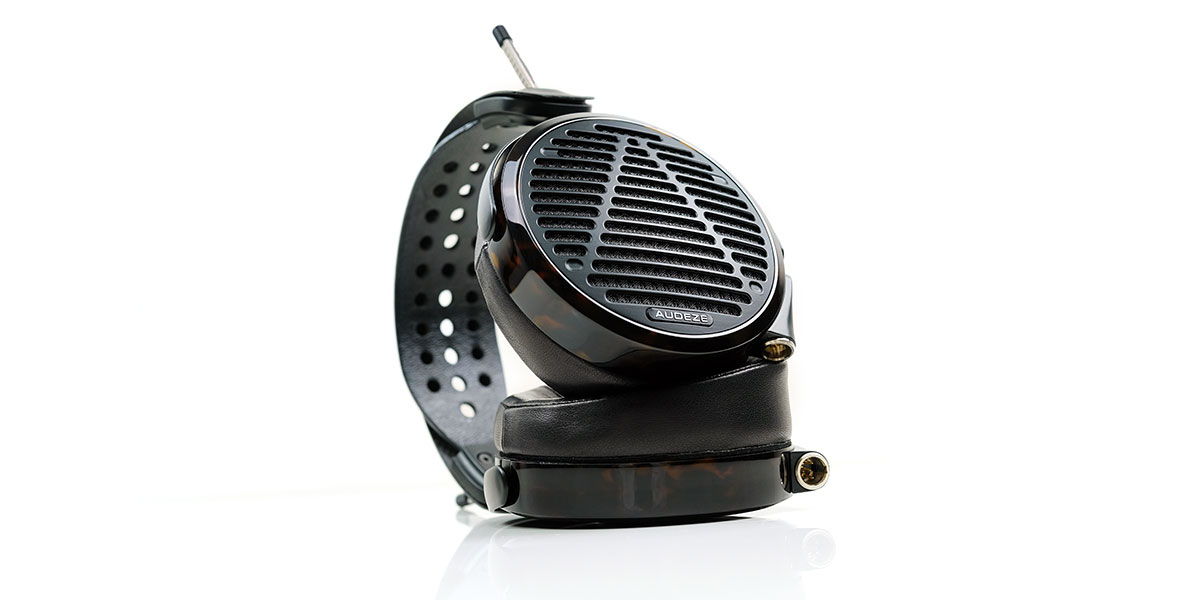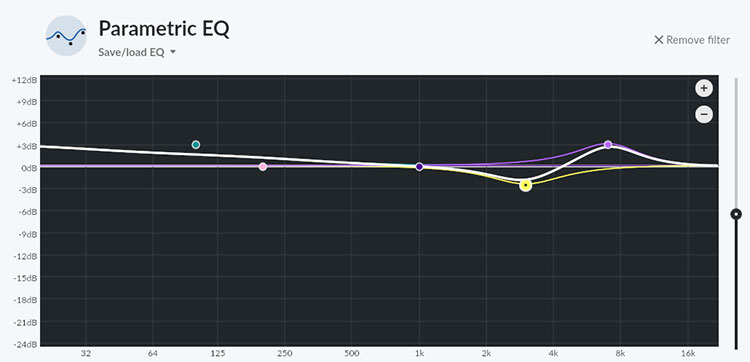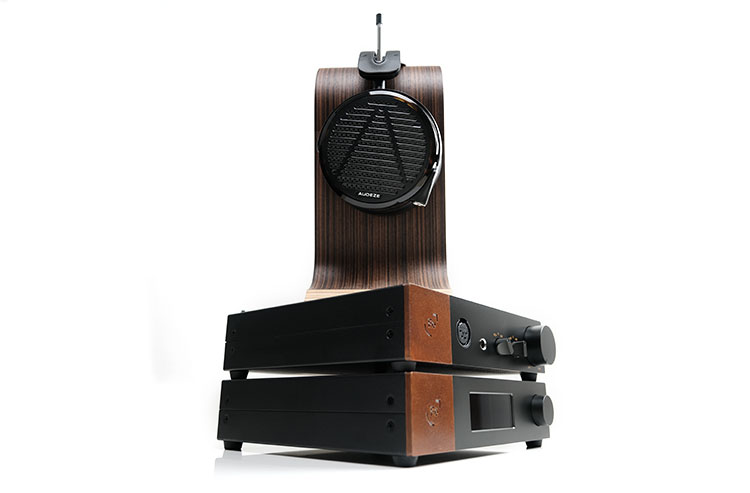Sound Impressions
Summary
The LCD-5 is the most natural and coherent-sounding planar headphone Audeze has produced to date. More than that it has that “Joie de vivre” when listening to music that I first encountered with the LCD-2 over 10 years ago and something I found missing on the LCD-4.
What I mean by that is the improved vibrancy in the presentation with larger-than-life vocals, a deep and articulate bass response, as well as a relaxed rather than forced treble that never distracts. It is very resolving, impressively quick, and energetic, but also very likable.
With the right setup and a bit of time breaking in that new driver the LCD-5 has an almost analog quality to its tone and is certainly a very good pairing for a wide range of genres.
The first few hours are important, however. Out of the box, the LCD-5 might seem a little bright and hard-edged in the upper mids, particularly on high-pitched percussion. If you have a good tube amp or warmish R2R DAC being a neutral amp with a good voltage swing then I suggest starting there for the first 10-20 hours.
The LCD-5 transparency is excellent so it will respond well not only to an amp and DAC’s synergy but also some judicious use of EQ, (PMEQ), to fine-tune it to your preferences. Beyond the initial period, those upper mids and lower treble calm down to deliver a very smooth-sounding timbre.
Frequency Response
The LCD-5 is relatively close to the Harman curve from 100Hz to 2-3k with less sub-bass elevation from 20Hz to 80Hz. Audeze has tuned the LCD-5 bass a little more neutral in quantity compared to the LCD-4 but with a gentle upwards trajectory into the lower mids from 500Hz up to 1k.
I have always found that that rise in the lower mids to be a classic Audeze trait as opposed to a heavy drop in some other headphones. Other curves dip to kill off excess warmth from a heavier bassline but it has the effect of thinning out instrumental presence.
Audeze keeps the LCD-5 bass relatively neutral with a slight hint of mid-bass warmth so they can emphasize the same range of instruments without excessive bloat. It is not as prominent as in the LCD-4 but not as distracting either creating clear but meaty guitar rhythm chord plucks and natural-sounding toms percussion strikes.
The 1-3k range on the LCD-5 is forward sounding and one of the dominant characteristics of its tuning. Everything up to 7-8k is on a downward slope so whilst upper mids are forward it doesn’t pick up any sharp overtones in the same manner as the LCD-4.
Nevertheless, the LCD-5 upper-mids tuning can sound aggressive with some recordings so depending on your preferences that is one EQ spot that can be safely dropped by 2-3dB to chill it out.
The LCD-5 has less lower-treble emphasis compared to the LCD-4 with a gradual drop to around 6-7k which is a slight deviation from the Harman target.
Some might define the treble as a bit darker sounding, however, I find the term relaxed more appropriate. I not hitting any ‘artificial wall’ and the bass isn’t overly dominant to shift your listening attention further down.
Timbre
This is where the LCD-5 really excels for me. Maybe it is due to the new driver’s capabilities over the older larger 106mm version but it seems Audeze has been able to completely rethink how those upper-mids and treble should mesh together sounding far more coherent compared to the LCD-4’s more uneven application.
Vocals sound big, broad, and smooth with tons of texture and detail. Though forward sounding they are not the only star of the show because on the low-end the bass is so much tighter and faster than I was expecting.
The LCD-5 does have a strong fundamental in its lower-pitching instrumental notes but equally, it does not feel weighed down by it. Natural and well-defined is the best phrase I can apply here with instrumental timbre benefitting from a slight mid-bass tilt for warmth but not too much sub-bass rumble or upper bass bloat to sound thick, slow, or congested in their delivery.
Treble overtones are not exaggerated in the LCD-5’s coloration so compared to the likes of the D8000 Pro and the Abyss Headphone Diana Phi it will come across as a little more rounded with a little less contrast.
That is not the case out of the box as mentioned before so I can well understand those who swear by tube amps as a valid pairing for the LCD-5 as they will produce some additional even-harmonic richness to the higher pitching percussion timbre such as woodblock and synth claps.
Staging
A very integrated if slightly rounded staging quality with mids front and center, especially vocals. I would characterize the LCD-5 staging as more akin to delivering a live concert or listening room feel rather than an arena-like sound or dry recording studio room vibe.
The depth is excellent if not overly exaggerated and not as voluptuous or as elevated as the LCD-4’s low-end. It does, however, sound punchier with better definition and improved PRaT as well as a smoother transition into the lower mids.
One thing that is so very impressive is the perceived speed and resolution of the LCD-5 imaging despite it sounding physical and weighted. Audeze has got the balance here just right between creating an authoritative tonal quality and ensuring there is enough space and control to deliver tight and complex musical passages convincingly.
If you are a vocal lover the forward 1-3k will push vocals to the fore which I enjoy but for some preferences, the combination of a strong vocal presence and vivid stereo imaging could prove to be more fatiguing.
Here, I recommend introducing some crosstalk first before EQ to bring a measure of calm to the LCD-5’s staging bias. You might lose a little in extreme stereo separation but in return, you get a little drop in vocal forwardness and a more speaker-like quality to the LCD-5 staging.
Treble extension might be the one perceived weakness with its gradual slope downwards from 3-6k and secondary minor bump around 7-8k but again it depends on your preferences. I find it very natural and coherent with less of a metallic aftertaste of the LCD-4 treble but others might prefer a bit more airy sparkle.
Synergy
Efficiency
The LCD-5’s impedance has a big drop from the 200Ω load of the LCD-4 down to just 14Ω and despite the 7dB drop between the old SPL (97dB) and the new, (90dB), the LCD-5 will sound snappier and louder at lower volumes on most amps.
It is still not the most sensitive out there though with the likes of the Final D8000 Pro and the Meze Empyrean faring better on weaker gear. However, the easier-to-drive LCD-5 is more sensitive compared to competitors like the Diana Phi and is no longer an outlier from the recent LCD Series line-up as was the LCD-4.
Decently powered DAPs fared better than I expected with the LCD-5 but only through their respective balanced 4.4mm outputs. DAPs such as the HiBy R8, FiiO M15, and the LP P6 Pro gave a decent account of themselves with a level of dynamic range that won’t shame the LCD-5.
My only complaints with portable sources centered on a perceived softness or a lack of punch in the bass response compared to some desktop alternatives. Also, imaging didn’t feel as distinct and incisive using a portable source balanced output compared to the equivalent output via a desktop amplifier.
The one DAP or semi-DAP that went somewhat beyond those concerns was the DX300 MAX which did cast a very wide and well-separated soundstage but it’s hardly portable.
However, when you do switch to a proper desktop amp and DAC, especially if you go balanced, you will get a jump in perceived dynamic range, better instrumental separation, and tighter bass performances over portable sources.
PMEQ
Generally, Audeze headphones respond quite well to EQ or PMEQ, as was the case with the LCD-XC we reviewed earlier this year. However, I do not really think the LCD-5 needs it quite like the LCD-XC. So, what type of EQ might apply here?
Ultimately it depends on what you are looking for but at a pinch, I would suspect some will tinker a little with the bass forwardness and presence combined with a bit more treble energy. Others might want to pull back on the mids forwardness to give it a more relaxed performance.
Using Roon’s excellent PMEQ system for the above, I would go with a low-shelf from 100Hz down to 20Hz with a Q Factor of around 0.3 to deepen the response and slam without upsetting the general coherency and transition into the mids. You should not hear any distortion with that setting.
You can also drop the mid-range forwardness to suit if you find the upper-mids too intense though I am fairly agnostic about that change as I tend to like a forward vocal. If you are keen then I suggest a soft dip of about 2.5dB but not too broad around 3-4k with a narrower Q Factor of 1.0.
The final tweak is around 6-8k with a bit of a treble lift to create a bit more contrast and lower treble imaging presence. If you want that swirling synth high notes to register a bit more and create some sparkle then add about 2-3dB here with another Q factor of about 1.0. You do not really want to go that much higher on the LCD-5 response curve.
Crossfeed
One small note on crossfeed, particularly with the dCS Bartok implementation. This is an excellent one-button tweak for those looking for a little more control on the LCD-5 imaging and can be used in conjunction with the above PMEQ settings quite nicely.
Though you will lose an edge in absolute stereo separation I personally find the staging and tone from the Bartok/LCD-5 pairing to be much more natural-sounding with crosstalk turned on.
Out Of The Box Pairings
Out of the box, the LCD-5 sounded fairly bright and hard-edged through the upper mids when paired with a Ferrum OOR and the DX300 MAX line-out for some initial testing.
However, it does relax significantly and fairly quickly with a much smoother sound through the mids and treble after a few hours. Alternatives such as the D8000 Pro and the Diana Phi do sound inherently brighter in comparison. Certainly, the LCD-5 mids and treble are a lot more pleasing than the LCD-4’s spikier upper treble.
If you do find it initially bright then one of the better burn-in setups for the LCD-5 are tube amps. In this case, the Auris Audio HA-2SF combined with a punchy but clean DAC such as the Chord Qutest gelled a lot better in the early stages with the LCD-5 compared to the more neutral and transparent Ferrum OOR.
With this pairing, the upper mids sounded a lot smoother, richer, and importantly I was hearing a weightier bass response with some welcome thickness. However, of all the combinations, this one fared less well in teasing out the maximum resolution and I did find myself looking for a little more treble sparkle also.
After Burn-In
Back to the Ferrum OOR/Hypsos combo after burn-in but this time with the Holo Audio Spring 2 DAC behind it and this was an almost perfect mix of detailed texture, dynamic range, and clarity. The LCD-5 bass response sounds tighter and more agile with this combination but not too sterile or bright through the mids and treble.
The Chord TT2/M Scaler combination will deliver more speed and perceived micro-detail compared to the Ferrum/Spring DAC 2 combo but at the cost of a little low-end weight. This is where that PMEQ setting might come in handy if you feel the low-end is too neutral for your tastes.
I was less fussed about the Violectric V590 pairing using its internal DAC. The slam is excellent and the vocals vibrant but those dual AK4490EQ DAC chipsets are not the most refined on the upper mids and treble of the LCD-5 so a little bit of dissonance creeps in for me sounding less refined.
My nailed on favorite pairing though was the dCS Bartok using its internal Ring DAC. It has the right balance with some excellent low-end weight and whilst a little bit drier than tubes the upper-mids and treble never sounded harsh. There is also no issue with power or current with the LCD-5 sitting very comfortably on -20dB using the 0dB gain setting.
The bonus with the Bartok is that crosstalk function I spoke about earlier. When applied it takes the sting out from any potential fatigue when peripheral imaging cues get thrown at you and calms the mids down beautifully.




